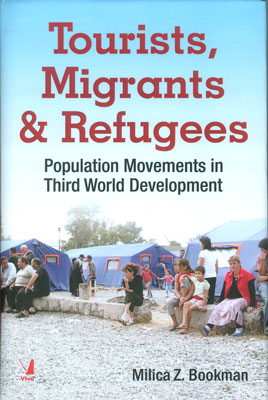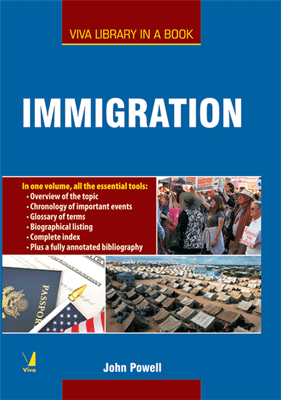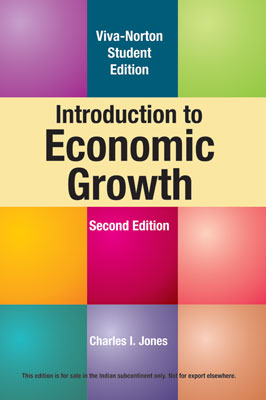Mathematics For Economists, 4/e
Mathematics For Economists, 4/e
An Introductory Textbook
₹805.50 ₹895.00 Save: ₹89.50 (10%)
Go to cart-
Out of Stock
ISBN: 9789386105233
Bind: Paperback
Year: 2017
Pages: 776
Size: 171 x 242 mm
Publisher: Manchester University Press
Published in India by: Viva Books
Exclusive Distributors: Viva Books
Sales Territory: India, Nepal, Pakistan, Bangladesh, Sri Lanka
Reviews:
“In spite of the wide scope of this textbook, its presentation is clear and crisp. The materials are very carefully organised. The transition from mathematical principles to economic propositionsi s remarkably lucid throughout the book. If a first-year undergraduate student in economics comes to ask me which one, among many books on mathematics for economists, to buy for years to come, then I would definitely tell them that this is the one.”
—Chiaki Hara, Institute of Economic Research, Kyoto University
“This is a great text to learn from - the authors do an excellent job providing intuitive explanations, making connections between results and illustrating the use of mathematics in solving economics problems, and there is a host of solved exercises which perform two roles: providing essential practice material and introducing further applications in economics.”
—Andrew Chesher, Director of The Centre for Microdata Methods and Practice, IFC and UCL
Description:
This book, now in its fourth edition, is a self-contained treatment of all the mathematics needed by undergraduate and masters-level students of economics: calculus, matrix algebra, probability, optimisation and dynamics. The emphasis throughout is on intuitive argument and problem-solving, and all methods are illustrated by well-chosen examples, exercises and problems selected from central areas of modern economic analysis.
Clear, systematic and building up gently from a very low level, the book can be used in a variety of course formats for students with or without prior knowledge of calculus, for reference and for self study. The last two chapters provide an introduction to the rigorous mathematical analysis used in graduate-level economics, and two chapters on probability theory, new to this edition, provide the essential mathematical background for upper-level courses on economic theory, econometrics and finance.
Answers to all exercises and complete solutions to all problems are available online from a regularly updated website.
Target Audience:
Useful for undergraduates and students of master level of economics.
Contents:
Preface • Dependence of Chapters • Answers and Solutions • The Greek Alphabet
Chapter 1: LINEAR EQUATIONS • Straight line graphs • An economic application: supply and demand • Simultaneous equations • Input-output analysis • Problems on Chapter 1
Chapter 2: LINEAR INEQUALITIES • Inequalities • Economic applications • Linear programming • Problems on Chapter 2
Chapter 3: SETS AND FUNCTIONS • Sets • Real numbers • Functions • Mappings • Problems on Chapter 3
Chapter 4: QUADRATICS, INDICES AND LOGARITHMS • Quadratic functions and equations • Maximising and minimising quadratic functions • Indices • Logarithms • Problems on Chapter 4
Chapter 5: SEQUENCES, SERIES AND LIMITS • Sequences • Series • Geometric progressions in economics • Limits and continuity • Problems on Chapter 5
Chapter 6: INTRODUCTION TO DIFFERENTIATION • The derivative. • Linear approximations and differentiability. • Two useful rules • Derivatives in economics • Problems on Chapter 6
Chapter 7: METHODS OF DIFFERENTIATION • The product and quotient rules • The composite function rule • Monotonic functions • Inverse functions • Problems on Chapter 7 • Appendix to Chapter 7
Chapter 8: MAXIMA AND MINIMA • Critical point • The second derivative • Optimisation • Convexity and concavity • Problems on Chapter 8
Chapter 9: EXPONENTIAL AND LOGARITHMIC FUNCTIONS • The exponential function • Natural logarithms • Time in economics • Problems on Chapter 9 • Appendix to Chapter 9
Chapter 10: APPROXIMATIONS • Linear approximations and Newton's method • The mean value theorem • Quadratic approximations and Taylor's theorem • Taylor and Maclaurin series • Problems on Chapter 10 • Appendix to Chapter 10
Chapter 11: MATRIX ALGEBRA • Vectors • Matrices. • Matrix multiplication • Square matrices • Problems on Chapter 11
Chapter 12: SYSTEMS OF LINEAR EQUATIONS • Echelon matrices • More on Gaussian elimination • Inverting a matrix • Linear dependence and rank • Problems on Chapter 12
Chapter 13: DETERMINANTS AND QUADRATIC FORMS • Determinants • Transposition • Inner products • Quadratic forms and symmetric matrices • Problems on Chapter 13 • Appendix to Chapter 13
Chapter 14: FUNCTIONS OF SEVERAL VARIABLES • Partial derivatives • Approximations and the chain rule • An economic application: production functions • Homogeneous functions • Problems on Chapter 14 • Appendix to Chapter 14
Chapter 15: IMPLICIT RELATIONS • Implicit differentiation • Comparative statics • Generalising to higher dimensions • Problems on Chapter 15 • Appendix to Chapter 15
Chapter 16: OPTIMISATION WITH SEVERAL VARIABLES • Critical points and their classification • Global optima, concavity and convexity • Non-negativity constraints • Problems on Chapter 16 • Appendix to Chapter 16
Chapter 17: PRINCIPLES OF CONSTRAINED OPTIMISATION • Lagrange multipliers • Extensions and warnings • Economic applications • Quasi-concave functions • Problems on Chapter 17
Chapter 18: FURTHER TOPICS IN CONSTRAINED OPTIMISATION • The meaning of the multipliers • Envelope theorems • Non-negativity constraints again • Inequality constraints • Problems on Chapter 18
Chapter 19: INTEGRATION • Areas and integrals • Rules of integration • Integration in economics • Numerical integration • Problems on Chapter • Appendix to Chapter 19
Chapter 20: ASPECTS OF INTEGRAL CALCULUS • Methods of integration • Infinite integrals • Differentiation under the integral sign • Double integrals • Problems on Chapter 20
Chapter 21: PROBABILITY • Events and their probabilities • Conditional probability and independence • Random variables • The binomial, Poisson and exponential distributions • Problems on Chapter 21 • Appendix to Chapter 21
Chapter 22: EXPECTATION • Expected value • The variance and higher moments • Two or more random variables • Random samples and limit theorems • Problems on Chapter 22 • Appendix to Chapter 22
Chapter 23: INTRODUCTION TO DYNAMICS • Differential equations • Linear equations with constant coefficients • Harder first-order equations • Difference equations • Problems on Chapter 23
Chapter 24: THE CIRCULAR FUNCTIONS • Cycles, circles and trigonometry • Extending the definitions • Calculus with circular functions • Polar coordinates • Problems on Chapter 24
Chapter 25: COMPLEX NUMBERS • The complex number system • The trigonometric form • Complex exponentials and polynomials • Problems on Chapter 25
Chapter 26: FURTHER DYNAMICS • Second-order differential equations • Qualitative behaviour • Second-order difference equations • Problems on Chapter 26 • Appendix to Chapter 26
Chapter 27: EIGENVALUES AND EIGENVECTORS • Diagonalisable matrices • The characteristic polynomial • Eigenvalues of symmetric matrices • Problems on Chapter 27
Chapter 28: DYNAMIC SYSTEMS • Systems of difference equations • Systems of differential equations • Qualitative behaviour • Non-linear systems • Problems on Chapter 28 • Appendix to Chapter 28
Chapter 29: DYNAMIC OPTIMISATION IN DISCRETE TIME • The basic problem • Variants of the basic problem • Dynamic programming • Problems on Chapter 29 • Appendix to Chapter 29
Chapter 30: DYNAMIC OPTIMISATION IN CONTINUOUS TIME • The basic problem and its variants • The maximum principle • Two applications to resource economics • Problems with an infinite horizon • Problems on Chapter 30 • Appendix to Chapter 30
Chapter 31: INTRODUCTION TO ANALYSIS • Rigour • More on the real number system • Sequences of real numbers • More on limits and continuity • Problems on Chapter 31
Chapter 32: METRIC SPACES AND EXISTENCE THEOREMS • Metric spaces • Open, closed and compact sets • Continuous mappings • Fixed point theorems • Problems on Chapter 32 • Appendix to Chapter 32
Notes on Further Reading
Index
About the Authors:
Malcolm Pemberton is Senior Lecturer in Economics at University College London.
Nicholas Ra is Honorary Senior Lecturer in Economics at University College London.







